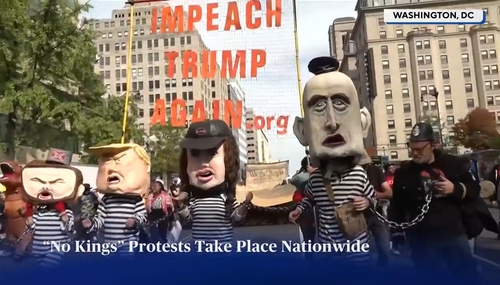 In his report ("Federal deficit at $430.69 billion through January") following yesterday's snow-delayed release of Uncle Sam's most recent Monthly Treasury Statement, the Associated Press's Martin Crutsinger informed readers that through the first four months of the fiscal year, "outlays total $1.12 trillion, down 3.9 percent from the spending through the same period in 2009."
In his report ("Federal deficit at $430.69 billion through January") following yesterday's snow-delayed release of Uncle Sam's most recent Monthly Treasury Statement, the Associated Press's Martin Crutsinger informed readers that through the first four months of the fiscal year, "outlays total $1.12 trillion, down 3.9 percent from the spending through the same period in 2009." He further explained that:
The huge deficits are being caused by the impact of a severe recession, which has trimmed the government's tax receipts and raised spending on such programs as unemployment insurance and food stamps. The deficits also reflect the billions of dollars being spent from the $787 billion stimulus program passed in February 2009 and the $700 billion financial bailout program Congress passed in October 2008 to stabilize the banking system.
The items I bolded in the excerpted paragraph are far from the only ones showing big increases. More to the point, two vaguely described spending line items in the report showing huge year-over-year spending decreases are masking big increases at many federal agencies.
Here is a rundown of the major offenders and line items through the first four months of the current fiscal year (from Page 2 of the Monthly Treasury Statement; percentage increases are derived from unrounded figures):
- Department of Education -- Up almost $10 billion (49.8%) to $32.7 billion.
- Department of Labor -- Up $24.7 billion (74.4%) to $58.0 billion.
- Health and Human Services -- Up $18.7 billion (7.3%) to $276.7 billion.
- Social Security Administration -- Up $16.3 billion (7.1%) to $246.6 billion.
- Interest expense -- Up $25.8 billion (18.6%) to $164.2 billion.
It's a lot more than "unemployment insurance and food stamps," Martin.
The items just listed increased by a combined $95 billion compared to fiscal 2009. Most other agencies and operational areas also showed increases.
So how did Uncle Sam manage to present a lower total of "outlays" compared to last year? Well, I can identify the line items, but won't pretend to understand what they are:
As the graphic above shows, when you subtract two vaguely labeled line items from total "outlays," the picture changes radically. What was a 4% drop dutifully reported by Crutsinger turns into an 11% increase.
The "other independent agencies" spending line item swung over $62 billion in fiscal 2010, from $24.6 billion the previous year to a negative $37.8 billion. This year's number seems to have gone the other way thanks largely but clearly not entirely to a negative $41.4 billion line item called "Federal Deposit Insurance Corporation."
There is no detail in the report explaining either this year's $38.9 billion or last year's $135.9 billion obliquely described as "Dept. of the Treasury -- Other," let alone why this year's amount is a whopping $97 billion lower than last year.
As seen in the "Adjustments" line in the graphic, the two line items came in a combined $159 billion lower than last year.
So what are these things, and why have they swung so wildly? I don't know. It's supposed to be Martin Crutsinger's and the AP's job to find out and tell us. If any company CEO were to receive a similar report from his or her CFO with such large unexplained and fluctuating items, you can guarantee that the CFO would be called on the carpet to tell the boss what the heck they are and what has happened with them. The news-consuming public deserves the same answers.
It seems less than forthright to exclude the two items just noted from a press report supposedly meant, among other things, to describe to readers what's actually happening with federal spending. Unless their role has changed to that of government stenographer, the "Essential Global News Network" known as the Associated Press owes it to us to find out what these things are, instead of allowing the government to present them as regular "outlays" and make it appear as if there is some kind of real control over federal spending. As just shown, there basically isn't any in day-to-day operations.
Cross-posted at BizzyBlog.com.




